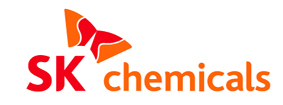SEOUL, South Korea--(BUSINESS WIRE)--Initz of SK Chemicals which leads Korea’s eco-friendly plastics industry, is entering the auto parts market with its super engineering plastic material.
Initz Co. Ltd., a subsidiary of SK Chemicals (KRX: 285130) (CEO Cheol Kim), announced that it has successfully commercialized its ECOTRAN® PPS (poly phenylene sulfide) compounds in collaboration with Hyundai Mobis, a global auto parts supplier. ECOTRAN® is the first material in the global auto industry that addresses the problem of headlamp haze by applying a super engineering plastic to automotive headlamp holders.
Initz is a joint venture of SK Chemicals Co. Ltd. and Teijin Ltd. of Japan. The two have successfully developed the world’s first chlorine-free PPS resin.
PPS is an engineering plastic which has been increasingly replacing metal materials in accordance with the "lightweighting" trend that has been sweeping the automotive industry for all cars and trucks but especially for electric vehicles. PPS is considered a super engineering plastic as it's highly resistant to both heat and corrosive chemicals. Initz produces PPS resin by using environment-friendly techniques that generate no byproducts and very few gases and impurities.
Initz’s high-performance PPS addresses the root cause of “lamp haze,” a chronic car headlight problem. The problem occurs because plastic parts inside headlamps begin to generate gas when the internal temperature rises to over 200°C. Upon cooling the gas solidifies and adheres to the interior of the lamp. The resultant film then undermines light projection thus threatening the safety of both drivers and pedestrians during nighttime. Also, the condition not only reduces the performance of the vehicle but also the appearance and light distribution value.
Lamp haze happens inevitably because plastics generate gas when subjected to high temperatures. Many global auto parts engineers have addressed the problem by focusing on the design of the internal structure of their headlamps as no other solution resolved the fundamental problem.
A headlamp holder needs to be highly resistant not only to high heat but also to humidity which is generated due to the temperature gap between the inside and outside of the headlamp. A headlamp holder must also be rigid enough so that internal parts are not loosened by strong vibration.
Working closely with Hyundai Mobis, Initz has succeeded in resolving the lamp haze issue by incorporating glass fiber using specially formulated resins to produce the new material. Thus the new product fundamentally addresses all the engineering problems.
The reliability of Initz’s PPS was confirmed through a methodical harsh environment test in which a headlamp of the new material was cycled (turned on/off) repeatedly for 70 hours straight and 8 test items for 3 months. Hyundai Mobis said it would use Initz’s PPS material in all of its headlamps in an effort to completely eliminate lamp haze.
“This material technology is applicable to products immediately after being developed and to extend a specific product line without variation, so Initz’ PPS will have a great impact on the market,” an automotive industry expert said.
“We have resolved the troublesome automotive problem of headlamp haze by utilizing our technology and experience we have gained in developing the world’s first chlorine-free PPS,” Initz CEO Hyo-kyung Kim said. “We will now expand our presence in the global auto parts market through continued development of materials technology.”
Initz is expected to secure a competitive advantage in the global race for better automotive materials given that its PPS resin has resolved the haze problem of headlamps, which is one of key parts which determine the exterior appearance of a vehicle.
* Chlorine-free PPS (Poly Phenylene Sulfide)
PPS is Super Engineering Plastic with high performance and weight reduction which can replace the metal. INITZ’s PPS is the world’s first Non-Chlorine and the Eco-Friendly PPS. INITZ’s PPS minimizes the outgassing and impurities by utilizing the technology of neither the solvent nor by-product (NaCl).
* Light Distribution
The luminous intensity and spatial distribution of the light source. Generally, it refers to the level of light transmission and diffusion.




